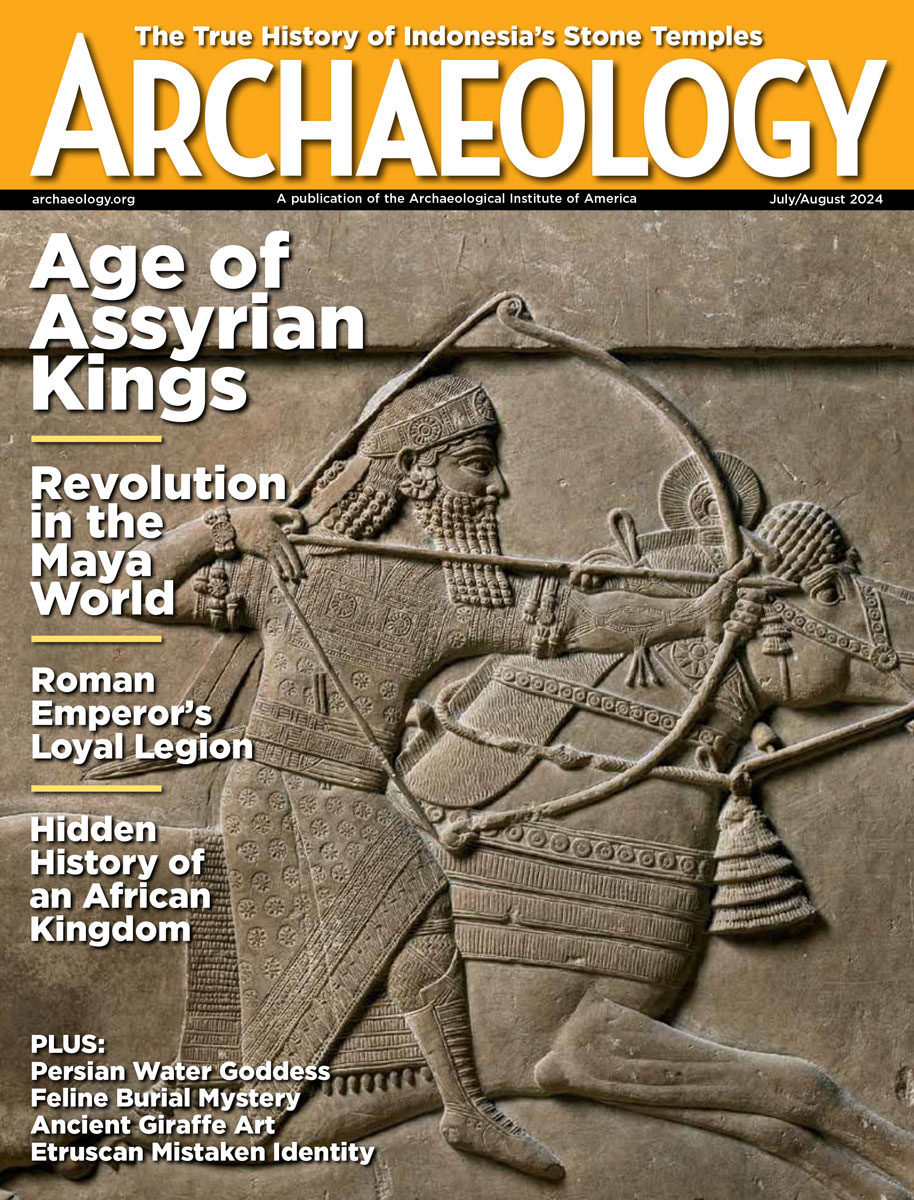Thursday, May 10
May 10, 2012
John MacGinnis of Cambridge University was deciphering the text on a 2,800-year-old Assyrian clay tablet from Turkey when he realized that the names of some of the women listed in the text were unique. He thinks the names may represent women prisoners of war who were captured in the Zagros Mountains of western Iran, and that their names could represent a previously unknown language. The tablet, which was part of a local palace archive, recorded that the women were moved to another village, probably to work.
Controversial archaeologist Yosef Garfinkel of Hebrew University claims to have uncovered shrines resembling biblical descriptions from the time of the Israelites’ early kings. The shrines are part of the 3,000-year-old fortified city of Khirbet Qeiyafa, and they contained five standing stones, two basalt altars, two pottery libation vessels, and two portable shrines. “There’s no question that this is a very important site, but what exactly it was – there is still disagreement about that,†commented Aren Maeir of Bar-Ilan University.
ORBIS is a new “Google Maps for the ancient world†created at Stanford University. The online map shows the cost of travel, likely travel times, and trade routes in the Roman world. Modes of travel include “rapid military march,†“ox cart,†and “camel caravan.†It even adjusts for traveling during the different seasons of the year.
A Confederate warship will be removed from the Savannah River to make way for a project to deepen the passage between a container port and the Atlantic Ocean. The ironclad CSS Georgia was scuttled in December 1864 to prevent its capture by Union troops led into Georgia by General William T. Sherman. At least two large pieces of the ship’s iron cladding are known to have survived, along with three cannons, and a propeller and other engine parts. “We don’t really have an idea of what’s in the debris field. There could be some personal items. People left the ship in a big hurry,†said Julie Morgan, an Army Corps of Engineers archaeologist.
- Comments Off on Thursday, May 10
Wednesday, May 9
May 9, 2012
A section of 600-year-old city wall in Nanjing was damaged when a Ferrari was put on top if it for a publicity stunt. Its spinning, screeching wheels left tire marks on the Ming Dynasty walls. The stunt was intended to kick off a Ferrari show marking the Italian car maker’s 20 years in the Chinese car market. Ferrari is said to blame a single employee for the incident.
Members of the Archaeological Society of New Jersey have responded to the news that a man was seriously injured while artifact hunting in a New Jersey public park. They recommend that people interested in archaeology should contact them or the New Jersey State Museum to learn about legal ways to participate in digs.
In England, archaeologists are condemning the Ministry of Defense plan to allow the American company, Odyssey Marine Exploration, to salvage the HMS Victory, which sank in the English Channel in 1744, in exchange for a percentage of the recovered artifacts or their value in cash. The ship may have been carrying a cargo of silver and gold. “Odyssey is a commercial salvager. It’s not clear that payment could be obtained other than by the sale of the artifacts which are raised,†said Colin Renfrew of the McDonald Institute for Archaeological Research at Cambridge University.
Bruce MacFadden of the University of Florida examined the levels of rare earth elements in human and animal bones that were discovered together in Vero Beach, Florida, in 1913. The animals lived during the last Ice Age, but at the time, it was believed that people came along long after the megafauna had died out. Because fossils absorb rare earth elements at a predictable rate, MacFadden was able to show that the Vero Beach bones had all been in the ground for the same period of time. “We found that humans came into Florida before the extinction of megafauna – they were in Florida by 10,000 years ago,†he explained.
Archaeologists are investigating one of the oldest occupation sites in Ireland in the Burren, a karst landscape in midwestern Ireland. Two axes and other small stone tools have been found, along with a shellfish midden where hunter-gatherers cooked and ate some 6,000 years ago. “These people would have come to certain places at certain times of the year. Obviously they came here to eat shellfish, but possibly they had another place beside a river nearby for when they wanted to catch salmon and trout, and at other times they would have collected things like hazel nuts,†said Michael Lynch, field monument adviser for County Clare.
In celebration of what would have been Howard Carter’s 138th birthday, Google has created a doodle of the Egyptologist admiring artifacts from Tutankhamun’s tomb. Carter found the intact tomb, which contained 5,398 objects, under another tomb in November of 1922. He died at the age of 64, before he could finish publishing his work. The University of Oxford is now building an online database of his complete excavation records.
- Comments Off on Wednesday, May 9









